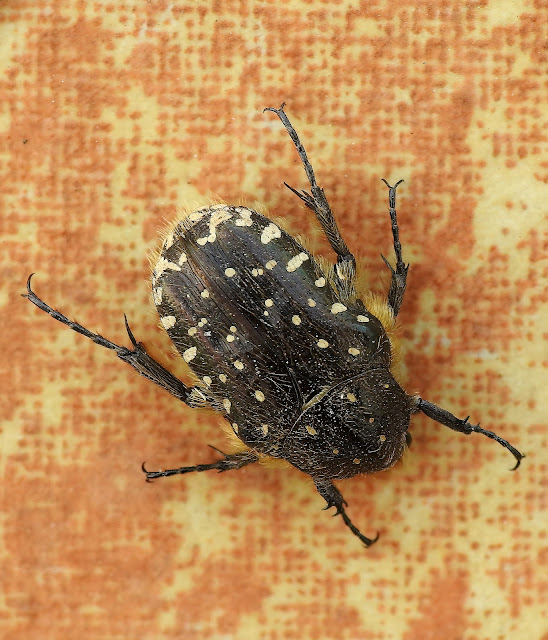This Blog contains Wildlife, Plants and Bird Photos from Walks, Safaris, Birding Trips and Vacations. Most of the pictures have been taken with my Nikon P900 and P950X cameras. Just click on any image for a larger picture. On the right column under the Blog Archive are the entries by date. Below that under Animal categories all the diffent species of Animals, Birds, Insects and Plants contained in the website are listed. Clicking on any entry will show all the entries for that species.
TOTAL PAGEVIEWS
TRANSLATE
Showing posts with label MEDITERRANEAN SPOTTED CHAFER (Oxythyrea funesta). Show all posts
Showing posts with label MEDITERRANEAN SPOTTED CHAFER (Oxythyrea funesta). Show all posts
Monday, 20 February 2023
Saturday, 9 June 2018
9-6-2015 MONTE CORONA, VALENCIA - MEDITERRANEAN SPOTTED CHAFER (Oxythyrea funesta)
Common name “White spotted rose beetle”.
This beetle is present in most of Europe, in the eastern Palearctic realm, and in the Near East.
Larvae are up to 30 mm long, they feed on plant roots and can remain until next spring in the soil.
The adults appear early in the spring, they grow up to 8–12 millimetres (0.31–0.47 in) and can mostly be encountered from May through July. They are considered an insect pest that do not just feed on pollen, but rode the floral organs, especially damaging light in color buds and flowers.
Their colour is black, more or less bronzed. Most of the specimens show six white spots in two longitudinal rows on the pronotum and many others on the elytra. They are completely covered with white pubescence (easily visible in profile). Older specimens usually have no hairs, as they are rubbed off with time.
Tuesday, 20 February 2018
20-2-2018 MONTE CORONA, VALENCIA - MEDITERRANEAN SPOTTED CHAFER (Oxythyrea funesta)
Oxythyrea funesta is a phytophagous beetle species belonging to the family Cetoniidae, subfamily Cetoniinae.
Common name “White spotted rose beetle”.
This beetle is present in most of Europe, in the eastern Palearctic realm, and in the Near East.
Larvae are up to 30 mm long, they feed on plant roots and can remain until next spring in the soil.
The adults appear early in the spring, they grow up to 8–12 millimetres (0.31–0.47 in) and can mostly be encountered from May through July. They are considered an insect pest that do not just feed on pollen, but rode the floral organs, especially damaging light in color buds and flowers.
Their colour is black, more or less bronzed. Most of the specimens show six white spots in two longitudinal rows on the pronotum and many others on the elytra. They are completely covered with white pubescence (easily visible in profile). Older specimens usually have no hairs, as they are rubbed off with time.
Subscribe to:
Comments (Atom)





